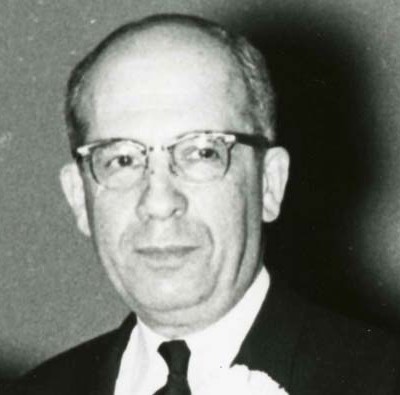
Albert Applebaum and his wife, Hansi Fiesna Applebaum, lived in the small town of Fuerth, in Bavaria. Albert Applebaum was in the moving and trucking business.
They had one son, Ernest Applebaum (1908-1993). After Albert Applebaum died of a heart attack in 1911, Hansi Friesna Applebaum and their son moved to Nuremberg to be closer to her family. About 1919, she married a man named Emil Nachman. He adopted her son, who became Ernest Applebaum Nachman. The family eventually moved to Stuttgart.
After graduating from the University of Stuttgart, Ernest Nachman found work in a department store. He was on a buying trip when the Nuremberg Laws went into effect in 1935. When he returned, Nachman recalled in a 1987 oral history for the Holocaust Center of Greater Pittsburgh, “One of the owners came and said, ‘You leave the store. I want you to leave the store immediately. A Jew has no place anymore in our store.'”
Nachman moved to Nuremberg to work for J. Rosenthal and Company, a wholesale textile business. In 1937, he married Gertrude Rosenthal, his employer’s daughter. Ernest and Gertrude Nachman had one child, Ruth. During Kristallnacht, in November 1938, Nachman was arrested and given seven days to leave the country. The family left Europe in 1939 on the last successful voyage of St. Louis. On its next sailing, the ship was turned away at Cuba and forced to return to Germany. The Nachmans settled in Butler, Pa., and later moved to Pittsburgh. Other members of their immediate families died in the Holocaust.
Ernest Nachman worked as a window dresser, a pillow maker, a door-to-door brush salesman and a Heinz factory worker before finding a job with the Metropolitan Life Insurance Company at the end of World War II. He stayed with the company for the next 40 years. Gertrude Nachman was an arts and crafts instructor at the YM&WHA.
“When my family and I came to Pittsburgh seeking a new life in a new country, there were people and organizations that helped us,” he said later, explaining his passion for volunteering. “I can never forget this.” He was involved in many Jewish philanthropic organizations in Western Pennsylvania. He was best known for his tenure as president of the Friendship Club, a local social and support group started by German Jewish refugees in 1936. Its members included the Weikers family and Marga Silbermann Randall.